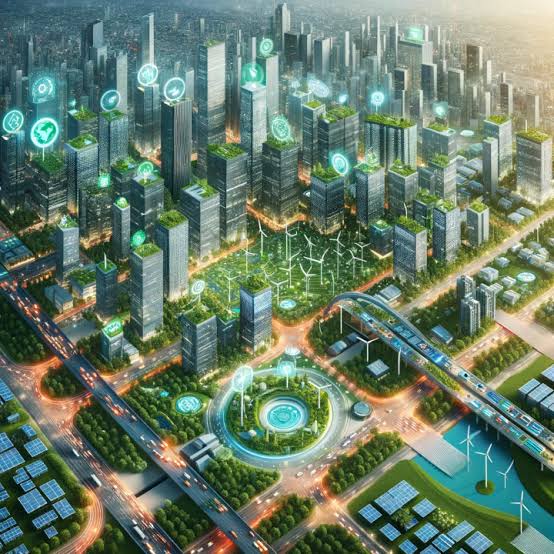Towns around the world continue to grow, and the need for sustainable infrastructure has in no way been more pressing. The traditional approach to urban development is evolving, and a brand new wave of green solutions is reshaping how we construct and stay. In this put-up, we’ll discover how present-day cities are adopting sustainable practices to create a better destiny for all.
Introduction to Sustainable Infrastructure
Sustainability isn’t only a buzzword; it’s an important factor in modern-day city-making plans. With climate exchange and aid depletion posing big threats, towns ought to include sustainable practices to ensure long-term viability. This includes optimizing FF&E and OS&E Procurement strategies to make sure that fixtures, furnishings, and equipment are sourced sustainably. Infrastructure, which forms the spine of city lifestyles, is at the leading edge of this variation.
The Evolution of Infrastructure
Historically, infrastructure improvement focused on expansion and functionality. Today, there’s a growing emphasis on decreasing environmental effects at the same time as preserving efficiency. This shift is pushed with the aid of the need to deal with weather trade, useful resource scarcity, and the growing demand for urban residing areas.
Key Sustainable Solutions in Modern Cities
Modern towns are harnessing several sustainable answers to revolutionize infrastructure. These improvements no longer best reduce environmental effects but additionally beautify the fine of city existence.
Green Building Materials
One of the most sizeable advancements in sustainable infrastructure is the usage of inexperienced construction substances. These substances are designed to limit environmental impact and enhance power performance. For example, recycled steel and bamboo are increasingly popular because of their low carbon footprint and durability. Additionally, inexperienced concrete, which incorporates recycled materials, is becoming a preferred choice for creation.
Energy-Efficient Designs
Architects and developers are reimagining strength consumption through revolutionary design methods. Solar panels, for instance, have become a staple in present-day buildings, supplying a renewable source of energy and lowering reliance on fossil fuels. Passive heating and cooling strategies also are gaining traction, using natural factors to modify indoor temperatures and decrease electricity intake.
Water Management Systems
Water conservation is another crucial issue of sustainable urban development. Modern towns are enforcing superior water control structures, consisting of rainwater harvesting and greywater recycling. These structures help lessen the call for municipal water materials and sell efficient use of this essential aid.
Role of Architects and Urban Planners
Innovative Design Approaches
Architects play a critical role in the shift toward sustainable infrastructure. By integrating contemporary technology and sustainable design concepts, they may be developing homes that are both purposeful and environmentally friendly. From energy-efficient houses to inexperienced skyscrapers, the scope of innovation in structure is sizable and thrilling.
Collaborative Planning
The complexity of sustainable infrastructure calls for collaboration among various stakeholders. Architects, engineers, city planners, and policymakers need to work collectively to expand cohesive and effective answers. This interdisciplinary approach ensures that every one factor of sustainability is taken into consideration, from strength efficiency to useful resource control.
Case Studies of Sustainable Urban Projects
Global Success Stories
Cities globally are leading the manner in sustainable infrastructure. For example, Copenhagen has ended up a version of green city development with its sizable cycling infrastructure and commitment to turning it into carbon-neutral by way of 2025. Similarly, Singapore’s Marina Bay Sands contains progressive inexperienced technologies, which include solar panels and water recycling structures, to reduce its environmental footprint.
Local Impact
In Oman, the focal point on sustainable infrastructure is likewise having a large effect. Projects inclusive of Sultan Qaboos University’s inexperienced campus show off how sustainable
practices can be integrated into academic centers. Additionally, using Galvanized Coil for Sale on the market in production demonstrates a dedication to the use of durable and eco-friendly substances.
Challenges and Solutions
Overcoming Barriers
While the blessings of sustainable infrastructure are clean, there are challenges to its implementation. Cost is an enormous barrier, as inexperienced technologies and materials may be greater costly than traditional options. Regulatory hurdles and the want for specialized understanding also can pose demanding situations. However, as the demand for sustainable answers grows, these barriers are gradually being addressed through progressive financing models and supportive rules.
Future Innovations
Looking ahead, emerging technologies hold promise for further advancing sustainable infrastructure. For instance, improvements in constructing facts modeling (BIM) and clever grid technology are predicted to enhance the performance and effectiveness of city systems. Continued research and improvement could be crucial in overcoming present demanding situations and pushing the bounds of what’s feasible in a sustainable layout.
The Future of Sustainable Urban Development
Long-Term Benefits
Investing in sustainable infrastructure yields long-term benefits for towns and their population. Green homes and efficient systems no longer handiest lessen environmental impact but also enhance public health and beautify the overall excellent of existence. By prioritizing sustainability, cities can create resilient communities that are more prepared to handle destiny-demanding situations.
Call to Action
The transition to sustainable infrastructure is a collective attempt. Individuals, organizations, and governments all have a role to play in assisting and advocating for eco-friendly practices. Whether via helping inexperienced constructing projects or selling sustainable policies, absolutely everyone can contribute to a greater sustainable future.
Conclusion
Revolutionizing infrastructure via sustainable answers is essential for the destiny of current cities. As we embody modern practices and technology, we pave the way for extra resilient and
environmentally pleasant city environments. By focusing on green building substances, power-green designs, and superior water management systems, we can construct towns that are not only functional but also harmonious with the natural global. The adventure closer to sustainability is ongoing, and with persevered dedication and collaboration, we will create a brighter future for all.

